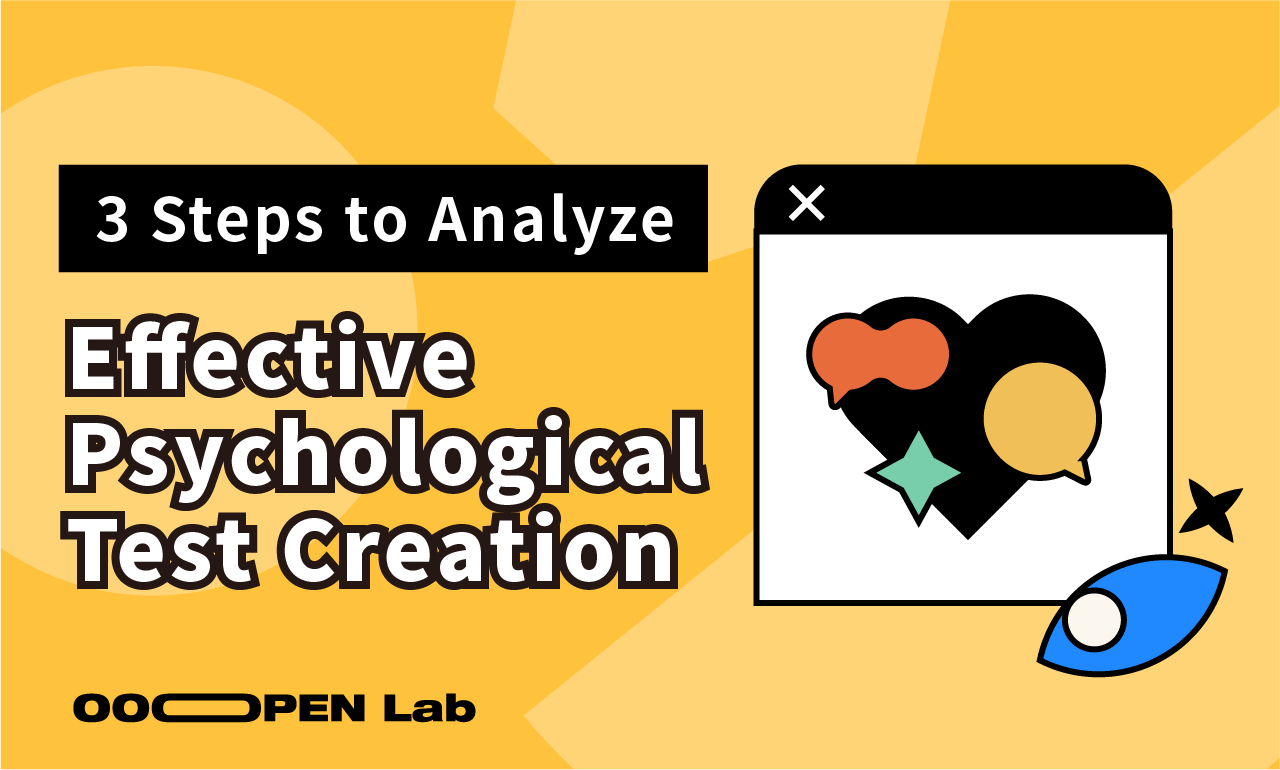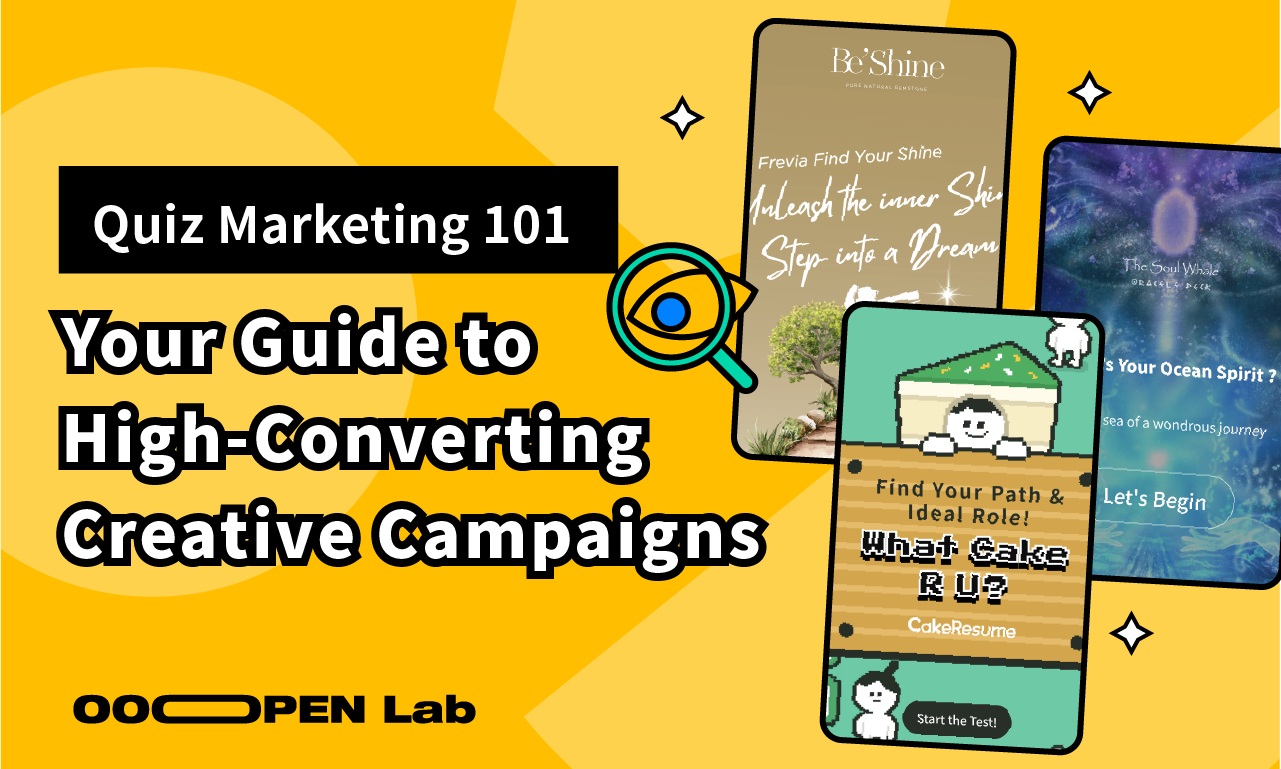“Irresistibly Shareable” is the Charm of Psychological Tests and an Unfailing Method for Creating Buzz on Social Media.But if you don’t understand psychological theories, can you successfully design the “mechanism of psychological tests”? Additionally, in this fast-paced era of online interaction, everyone is surely concerned about how to “more efficiently” produce psychological tests that people can’t help but share.
This article condenses the experience of the “OOOPEN Lab” team in creating 60 psychological tests. Through 3 steps, we will lower the “production threshold” of psychological tests and summarize simple and feasible methods to increase the likelihood of psychological tests being “shared”! Everyone can quickly create fun psychological tests!
Table of Contents
- What essential elements do viral psychological tests have?
- The undefeated process for efficiently creating psychological tests: 3 steps to success.
What Essential Elements Do Viral Psychological Tests Have?
“No one on Earth can predict what will go viral.” Gary Vaynerchuk, a four-time New York Times bestselling author, believes that consistently producing content efficiently is the key to content marketing. “If someone tells you they can predict what will go viral, they are either a fraud or an arrogant fool.”
Although it is impossible to predict what will go viral, you can grasp the “basic elements of popularity” to “increase the chances of going viral.” By doing just two things, you can significantly increase the likelihood of your psychological test being shared:
Simple and Smooth Experience
To increase the chances of your psychological test being shared, it is crucial for the audience to play until the end to see the “test results.” This means the “completion rate” is essential. A smooth experience prevents users from quitting halfway, making it a fundamental element of a successful psychological test. Achieving a smooth experience isn’t difficult. There are two key points to check:
1.The Entire Test is Simple and Easy to Understand.
2.Visuals and Copy are Consistent and Immersive. You can easily test these points by having 6-10 colleagues or friends who are unaware of the test details try it out. Gather their feedback to make simple adjustments and improvements.
Subtle Positive Feedback
In the design of psychological test experiences, the most common form of positive feedback is holding a lottery on the final results page. Besides this, there are a few other practical and easy-to-achieve forms of positive feedback, which will be shared in the second step of the production process in this article.
Foolproof Efficient Production Process for Psychological Tests: Get It Done in 3 Steps
Step 1: Clearly Define the Marketing Purpose, Keep the Audience in Mind, and Set Effective and Feasible Calls to Action (CTA) with the End in Mind
There are many different marketing purposes, but not all of them can be achieved through psychological tests. The following are some common purposes that psychological tests are often used to achieve: product recommendation and guidance, prompting changes in thinking, promoting online/offline activities, and spreading knowledge or ideas.
To align with different purposes, the test should have different calls to action (CTAs) at the end. Once you have clearly defined the CTAs that match the overall marketing objectives of the test, design the test content with the audience’s preferences and characteristics in mind, starting with the end goal. This approach ensures that the final CTAs resonate more with the audience, ultimately increasing the “conversion rate.”
For example, in product recommendation and guidance, it is more important to spark potential consumers’ interest in the recommended product than to directly emphasize how great the product is. Ideally, you can embed personalized experiences that highlight the product’s features throughout the test, making the recommendation feel more exclusive. An example is YIRIH Living’s “Follow Your Scent” test, which provides personalized fragrance recommendations based on the test results. The test allows users to almost “smell” their perfect fragrance through elegant graphics. During the promotional period, users who complete the test can visit physical stores to redeem a “plant blessing tag with essential oil,” seamlessly connecting the online experience to an offline sensory introduction of the product. This approach perfectly immerses the audience in the product experience.
Another example is guiding a change in thinking. To promote the concept of “minimalist living” and encourage the audience to reflect on their impulsive consumption habits without being preachy, you need to creatively package the call to action, such as “various methods to curb impulsive spending.” We came up with the idea of humorously translating this message through various “fairy tale character scenarios.” This approach not only allows people to accept the message with a sense of self-irony but also achieves the intended purpose and increases the willingness to share.
Before moving on to the second step, you must clearly define your marketing purpose. If the marketing objectives and strategies are unclear, it will affect the final call to action of the psychological test and result in wasted resources. If you have doubts about brand communication purposes, strategies, or content, read “The Slow Communication Prototype in a Rapidly Changing Era – An Anatomy of Communication for All Modern Brands,” which summarizes RE:LAB‘s ten years of experience in brand communication.
Step 2: To Achieve the Call to Action, Design an Engaging Theme and Choose the Right Test Mechanism
If you lack inspiration for a “theme plan,” dive into the inspiration library! OOOPEN Lab continuously collects interesting and engaging psychological tests and social interaction games. With over 50 exciting case studies, from cover visuals to overall planning, you’ll find plenty of ideas. Don’t wait for inspiration to come to you—go out and find it!
Besides referencing great case studies, you can try the simplest and most intuitive way to create a theme: combine unexpected elements. If you’re out of ideas, look at high-search keywords like love, colors, Taiwanese snacks, cocktails, animals, travel, etc. For example, this psychological test, with millions of participants, combines love, personality, and Taiwanese snacks, making it irresistible to play and share!
As for the “test mechanism,” if it’s not for research purposes but to create a better user experience, you can refer to classic theories. You can also check the inspiration library mentioned in Step 1, which contains many tests that cleverly apply relevant psychological theories to enhance the overall experience.
Additionally, there’s a new highly efficient option: just ask ChatGPT! As shown in the image below, you can describe your project and test logic needs in a few simple sentences and get relevant theory recommendations within a minute. If you want to avoid using common psychological test theories, give it a try and let AI assist you. It might add a unique charm to your test !
Before finishing Step 2, don’t forget the “positive feedback” mentioned at the beginning of the article. Consider the entire process from the perspective of the test participants:
Attracted by the test’s theme and visuals on social media, or finding it interesting through a friend’s shared results, participants click on the link. Seeing the test cover gives them a more concrete idea of the test’s theme. The initial copy and images create a sense of ceremony, making them more willing to complete the test. Throughout the process, everything is simple and intuitive, requiring no excessive thought or difficulty. Finally, they receive personalized test results. To invite friends to play or help others understand them better, they immediately share the results on social media or in group chats.
Think about it, what is the most important key in the above experience process?
It’s the “personalized test results” that appear at both the beginning and the end! A well-designed “personalized test result” can attract more people to play on social media. Because they find it interesting, they share it on social media, attracting even more people to play. Therefore, “positive feedback” and “personalized test results” should be closely connected.
Besides “lotteries” or “redeemable prizes,” what other options are there for positive feedback? Basic psychological needs, such as “pride,” “belonging,” and “connection,” are expectations for those taking psychological tests. Common techniques include sharing personal results to find similar “like-minded people” or “letting friends know what kind of person they are.” Consider adding these important details to the test results page to enhance the positive feedback of the “personalized test results.”
The following example is from the “How Drunk Are You in Life?” test by Cheers Bar. The test results encourage you to find a “drinking buddy” that suits you, enhancing the “sense of connection” and increasing the likelihood of sharing.
Step 3: Create Engaging Visuals and Copy, but Engaging Doesn’t Mean Expensive
Create visual materials and copy for the test in the following order of importance: personalized results page, preview thumbnail for shared links, cover page, and question pages.
You don’t need to invest a lot of resources to create attractive visuals and copy. As long as they capture the audience’s attention, spark curiosity and resonance, and encourage sharing, they are effective materials.
The example below is from Giloo‘s marketing team, which used existing documentary promotional materials to create a layout without any design resources. The questions contained only text descriptions, but the wording was simple, intuitive, and vivid, allowing users to complete it in a minute and receive a personalized “soul character analysis.” The unexpectedly high redemption rate proved that a good psychological test doesn’t need flashy visuals—just an engaging theme, a smooth experience, and a bit of positive feedback.




